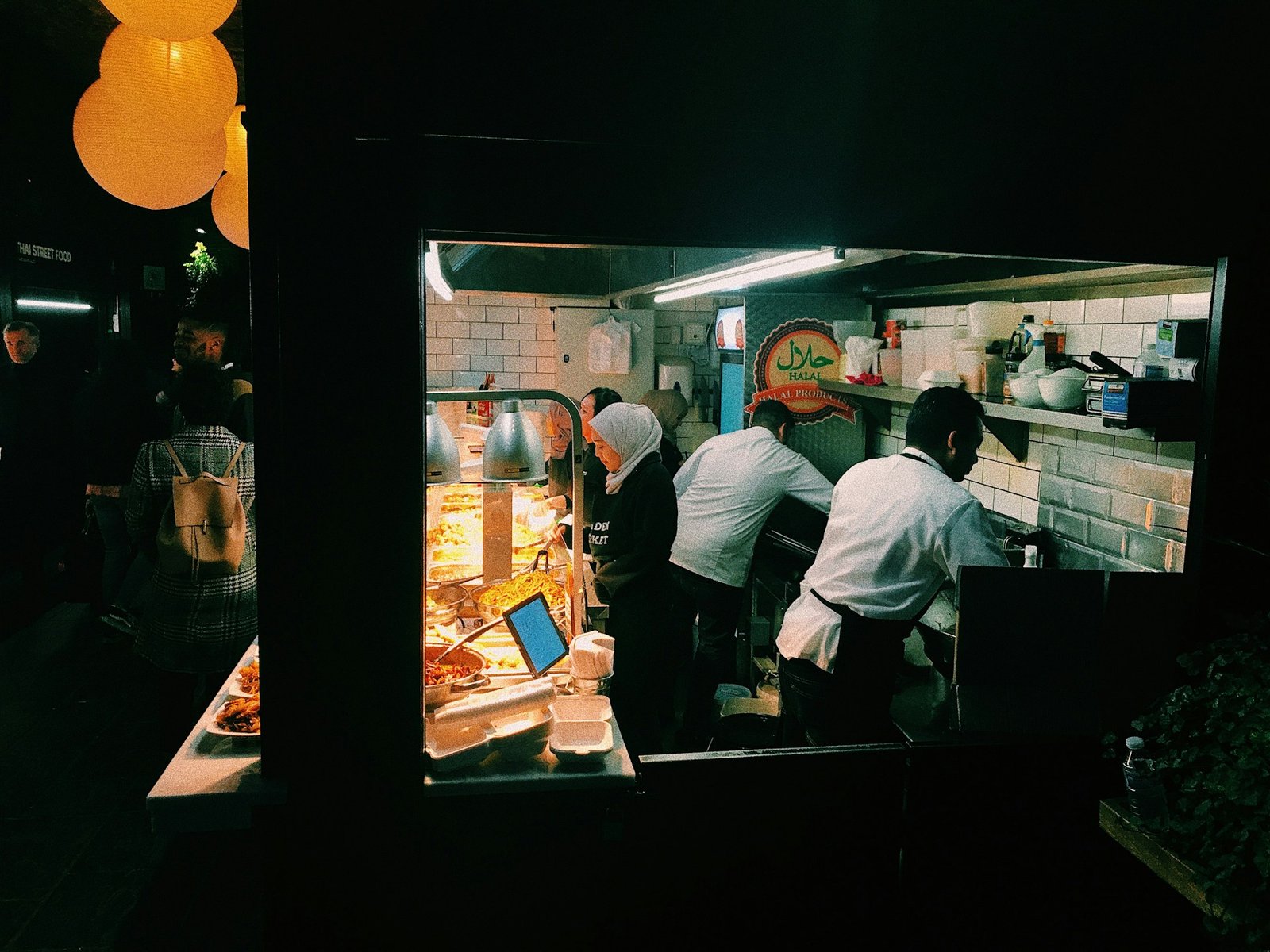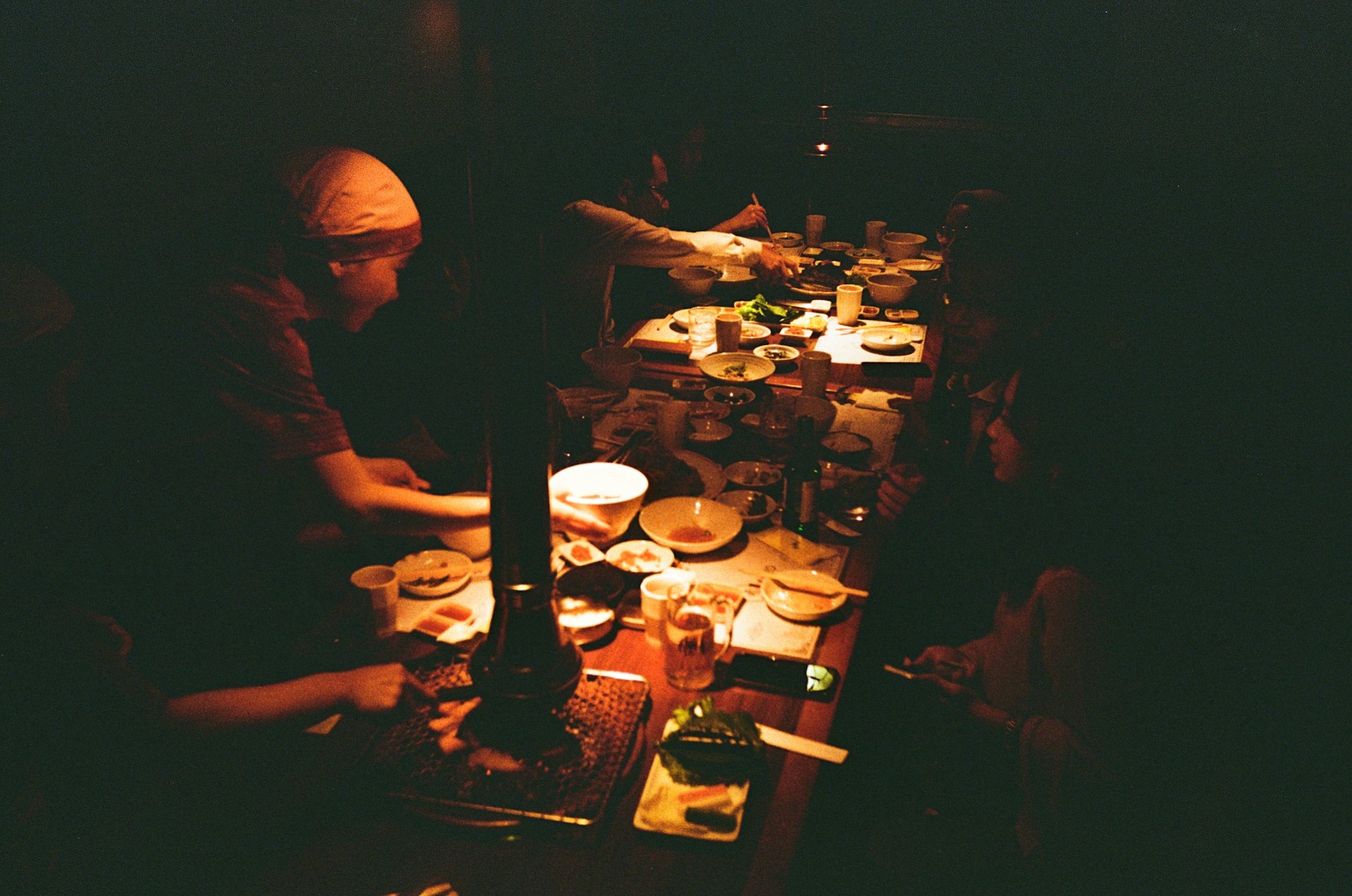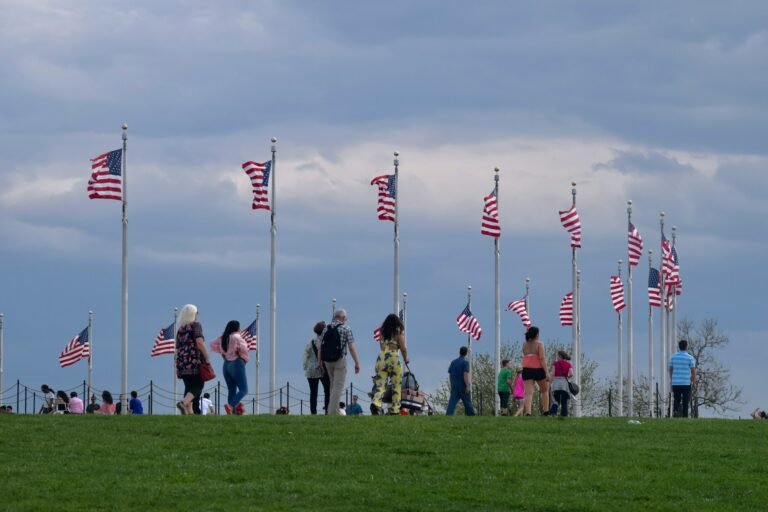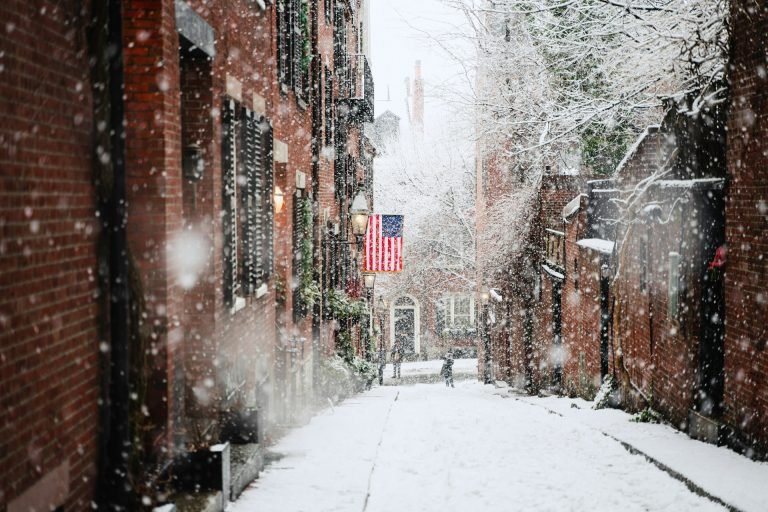There’s something weirdly intimate about watching someone cut into a perfectly prepared steak, steam rising as the knife reveals that blushing pink interior. The casual symphony of clattering plates and murmured conversations that form the backdrop to any memorable dining experience. The way certain flavors can transport you instantly to another time and place.
I’ve spent the better part of the last decade chasing these moments across America, from hole-in-the-wall joints with lines around the block to white-tablecloth establishments where the waitstaff moves with balletic precision. What began as a casual interest evolved into a full-blown obsession with understanding America’s vast culinary landscape—a patchwork quilt of immigrant traditions, regional specialties, and constant innovation.

America’s Food Geography: More Than Just Burgers and Fries
Let’s get something straight—American cuisine isn’t a monolith. It’s as varied as the country’s landscape, with each region offering distinctive flavors shaped by history, immigration patterns, and available ingredients. From the seafood-heavy dishes of New England to the spicy, soulful cooking of the South, every bite tells a story.
The transformation of American food culture over the past twenty years has been nothing short of revolutionary. When I started this journey, finding authentic international cuisine often meant trekking to specific neighborhoods in major cities. Now, even small towns often boast Thai restaurants where the som tam could make you weep with joy, or taquerias serving birria so authentic you’d swear you’d teleported to Jalisco.
The Northeast: Where Tradition Meets Innovation
My first stop on any culinary tour of America has to be New York City—not because it’s obvious, but because it’s earned its reputation. The city remains America’s greatest food laboratory, where chefs from around the world come to test their concepts against the world’s most discerning (and occasionally brutal) food critics: everyday New Yorkers.
Beyond the expected pizza and bagels—though you absolutely should stand in line for an everything bagel at Russ & Daughters on a Sunday morning—New York offers neighborhoods like Jackson Heights in Queens, where you can sample momos from Nepal, arepas from Colombia, and phở from Vietnam within a single square mile.
But don’t overlook smaller Northeastern cities. Providence, Rhode Island has quietly developed one of the country’s most exciting food scenes, leveraging its proximity to the ocean and the influence of Johnson & Wales University’s culinary program. The Italian food in Federal Hill rivals anything you’ll find in Boston’s North End, and often at half the price.
Speaking of Boston, while there’s certainly chowder and lobster rolls to be had (Neptune Oyster serves a hot buttered lobster roll that still haunts my dreams), the Portuguese influences in nearby New Bedford and Fall River create a distinctive coastal cuisine you won’t find elsewhere.
The South: Soul Food and Beyond
I once made the mistake of telling a chef in Charleston that I was “just passing through” with a couple of hours to kill before my next flight. She looked at me like I’d just insulted her grandmother, then proceeded to map out a four-day eating itinerary that would have required both superhuman digestive capabilities and time travel.
The South takes its food seriously, and with good reason. Southern cuisine represents America’s most distinctive and influential regional cooking style, built on a complex foundation of African, European, and Native American influences.
New Orleans stands as the crown jewel of Southern cooking, where Creole and Cajun traditions have produced dishes of incredible depth and character. Yes, you should have beignets at Café du Monde—not because it’s the best spot (locals have plenty of other favorites), but because there’s something magical about sitting there with powdered sugar inevitably finding its way onto your clothes while watching the city wake up.
But venture beyond the obvious destinations. In Memphis, the debate over wet versus dry ribs isn’t just culinary—it’s practically theological. In Nashville, hot chicken has gone from local specialty to national phenomenon, though few places prepare it with the face-melting intensity of Prince’s, where the “hot” level should come with a liability waiver.
The Midwest: Heartland Cooking Gets Its Due
For too long, the Midwest has been unfairly cast as a culinary flyover zone. That perception is changing fast as cities like Chicago, Minneapolis, and Detroit assert themselves as food destinations in their own right.
Chicago’s food scene extends far beyond deep-dish pizza and Chicago-style hot dogs (though both are worthy of your attention). The city’s immigrant communities have created a tapestry of neighborhoods where you can find everything from perfect Polish pierogi to Ethiopian injera served in the traditional communal style.
I’ll never forget stumbling into a small Korean restaurant in a nondescript strip mall outside Detroit, only to experience one of the best meals of my life—panfried mandu dumplings with a crisp lacework crust that still makes me sigh when I think about it, followed by a bubbling pot of soon dubu jjigae that cleared my sinuses and recalibrated my understanding of what a strip mall restaurant could achieve.
The West Coast: Fresh, Innovative, and Diverse
California cuisine isn’t just a style of cooking—it’s a philosophy centered on fresh, seasonal ingredients and unfussy preparation. From the farm-to-table restaurants of San Francisco to the immigrant-influenced street food of Los Angeles, the West Coast offers some of America’s most exciting eating experiences.
Portland, Oregon deserves special mention for its food cart culture, which allows chefs to experiment with concepts that might never survive as full restaurants. I’ve had Scandinavian-Japanese fusion, Georgian khachapuri, and Guamanian barbecue, all within a two-block radius.
Seattle’s Pike Place Market gets all the tourist attention, but the city’s International District reveals its true culinary soul. Here, Chinese, Japanese, Vietnamese, and Filipino establishments sit side by side, many in their second or third generation of family ownership.
Beyond the Big Cities: Small Town Treasures
Some of my most memorable meals have happened in places you’d never expect to find on a foodie tour. Like the life-changing tamales I discovered at a gas station in Sebastopol, Mississippi, made by a woman who rises at 4 a.m. every morning to prepare them fresh. Or the unassuming diner in Chillicothe, Ohio that serves a goetta breakfast sandwich that makes the two-hour detour from Columbus completely justified.
These experiences remind me that great food isn’t just about fancy techniques or exotic ingredients—it’s about care, tradition, and the simple pleasure of feeding others well.
The Rise of Food Tourism: Planning Your Culinary Adventure
Food tourism has evolved from a niche interest to a primary motivator for travel. According to recent tourism studies, over 75% of travelers now consider culinary experiences an essential part of their trip planning, up from just 40% a decade ago.
This shift has created infrastructure to support food-focused travelers. Food tours have become sophisticated operations led by knowledgeable guides who can provide context beyond just what’s on your plate. Apps like Yelp and Google Maps have made finding hidden gems easier, though I still maintain that the best recommendations come from talking to locals—particularly bartenders, who tend to know where the chefs eat after their shifts end.
Creating Your Culinary Itinerary
When planning your own food-focused trip across America, consider these approaches:
- Focus on a specific cuisine and trace its evolution across regions (like barbecue from Texas to the Carolinas)
- Deep-dive into a single city’s food scene, exploring neighborhoods beyond the tourist core
- Follow a thematic route (wine country, oyster trail, etc.)
- Build your trip around food festivals and events
The beauty of food travel is that it connects you to places in ways that standard tourism often fails to do. You’ll find yourself in neighborhoods you might otherwise miss, talking to locals about their favorite childhood dishes, and creating memories that engage all your senses.
Top Culinary Destinations Across the U.S.
Here are some must-visit destinations for any serious food traveler:
| City | Known For | Don’t Miss |
| New Orleans, LA | Creole/Cajun | Commander’s Palace for turtle soup |
| Portland, OR | Food carts, craft beer | Nong’s Khao Man Gai for Thai chicken rice |
| Chicago, IL | Deep dish, molecular gastronomy | Girl & the Goat for inventive small plates |
| Charleston, SC | Lowcountry cuisine | FIG for seasonal Southern cooking |
| San Francisco, CA | California cuisine, sourdough | Tartine Bakery for morning buns |
| New York, NY | Everything | Diversity of ethnic neighborhoods |
| Austin, TX | Barbecue, breakfast tacos | Franklin Barbecue (worth the line) |
| Nashville, TN | Hot chicken, meat-and-three | Arnold’s Country Kitchen for classic Southern |
| New Haven, CT | Pizza | Frank Pepe for white clam pie |
| Los Angeles, CA | Tacos, Korean fusion | Grand Central Market food hall |
My Personal Food Travel Disaster (And What I Learned)
No discussion of food travel would be complete without acknowledging that sometimes things go spectacularly wrong. During a trip to Texas Hill Country, I’d meticulously mapped out a barbecue crawl that would hit five legendary spots in a single day.
The plan was ambitious but mathematically possible—until my rental car developed a mysterious rattle outside Lockhart that evolved into full-blown engine failure. As I waited four hours for a tow in the August heat, watching the barbecue joints close one by one, I learned an important lesson about food travel: flexibility matters more than perfect planning.
The day wasn’t a total loss—the mechanic who eventually rescued me recommended a nondescript Mexican restaurant nearby where I had chile rellenos that made me momentarily forget about missing out on all that brisket. Sometimes the universe has other culinary plans for you.
Where American Food Is Heading
As much as I love traditional regional specialties, what excites me most about American food is its constant evolution. Young chefs are reinterpreting their heritage cuisines, bringing techniques from fine dining to casual concepts, and creating hybrids that would have been unimaginable a generation ago.
Climate change and sustainability concerns are also reshaping how we eat. Plant-forward cooking has moved from specialty restaurants to mainstream menus. Heritage grains and heirloom produce varieties have been rescued from near-extinction. These aren’t just trends—they’re fundamental shifts in our food culture that point toward a more sustainable and diverse American cuisine.
Whatever your culinary interests—whether you’re chasing the perfect slice of pizza or exploring how immigration has shaped regional foodways—America offers endless opportunities for delicious discovery. Just bring your curiosity, your appetite, and perhaps pants with a forgiving waistband.
Top Food Travel Resources
- Websites & Booking Platforms:
- Eater.com – https://www.eater.com – City guides with neighborhood maps and up-to-date recommendations
- Culinary Backstreets – https://culinarybackstreets.com – Deep dives into authentic food scenes
- Tock – https://www.exploretock.com – Reservation platform for high-demand restaurants
- Atlas Obscura Food Section – https://www.atlasobscura.com/categories/food-drink – For truly unusual food experiences
- Resy – https://resy.com – Modern reservation platform with good mobile experience
- Food Tours & Experiences:
- Avital Tours – https://avitaltours.com – Neighborhood-focused food tours in major cities
- Traveling Spoon – https://www.travelingspoon.com – Home cooking experiences with local hosts
- Airbnb Experiences – https://www.airbnb.com/s/experiences – Filter for food and drink experiences
- Bite San Diego – https://www.bitesandiego.com – Walking food tours through San Diego neighborhoods
- Devour Tours – https://devoureatours.com – Food tours in select U.S. cities
- Food Festivals Worth Traveling For:
- Food & Wine Classic in Aspen – https://classic.foodandwine.com
- New Orleans Wine & Food Experience – https://nowfe.com
- Charleston Wine + Food – https://charlestonwineandfood.com
- Portland Feast – https://www.feastportland.com
- NYC Wine & Food Festival – https://nycwff.org
- Specialty Food Shops:
- Zingerman’s – https://www.zingermans.com – Iconic Ann Arbor deli and food emporium
- Pike Place Market – https://www.pikeplacemarket.org – Seattle’s historic public market
- Chelsea Market – https://www.chelseamarket.com – New York food hall in former Nabisco factory
- Ferry Building Marketplace – https://www.ferrybuildingmarketplace.com – San Francisco food hall
- Reading Terminal Market – https://readingterminalmarket.org – Philadelphia’s historic public market
FAQ: Food Travel Across America
What’s the best time of year for a food-focused road trip across America? Spring and fall generally offer the best combination of pleasant weather and seasonal ingredients. Summer brings excellent produce but can be uncomfortably hot in the South, while winter may limit your options in northern states due to seasonal closures.
How many restaurants can you realistically visit in one day? For maximum enjoyment, limit yourself to 1-2 sit-down meals supplemented by 2-3 snack stops. Any more than that and palate fatigue sets in, diminishing your appreciation of later stops.
What’s the best way to avoid tourist traps when looking for authentic food? Venture at least five blocks from major tourist attractions, look for restaurants where the signage isn’t in English, and ask local residents (not hotel concierges) for recommendations.
Do I need reservations for most restaurants on a food tour? For fine dining and trendy hotspots, absolutely—often weeks in advance. For casual spots, weekday visits often don’t require reservations, but weekend prime time (7-9 PM) nearly always does in major cities.
How do regional barbecue styles differ across America? Texas focuses on beef brisket with minimal sauce, Kansas City favors sweet tomato-based sauces on multiple meats, Memphis specializes in dry-rubbed ribs, and the Carolinas are known for pulled pork with vinegar-based sauces.
What should I know about tipping at American restaurants? The standard is 18-20% for table service. At counter service establishments, 10-15% is appreciated but not as strongly expected. Some high-end restaurants have moved to service-included pricing, but this will be clearly noted on the menu.
Are food allergies and dietary restrictions well-accommodated across the US? Major cities offer excellent options for nearly all dietary needs. In rural areas, vegetarian options are increasingly common, but vegan, gluten-free, and other specific restrictions may be more challenging (though not impossible) to accommodate.
What’s the best strategy for trying multiple dishes without getting too full? Share plates, order appetizers instead of entrees, and don’t be shy about taking leftovers for later. Many serious food tourists adopt a “three-bite rule”—enough to fully appreciate a dish without filling up too quickly.
How do I find pop-ups and underground dining experiences? Follow local chefs and food writers on Instagram, sign up for city-specific food newsletters, and check platforms like Eventbrite and Resy for special events.
What essentials should I pack for a food-focused trip? Comfortable walking shoes (food neighborhoods are best explored on foot), portable antacids, a journal to record memorable dishes, and clothing with some stretch to accommodate fluctuating food intake!






